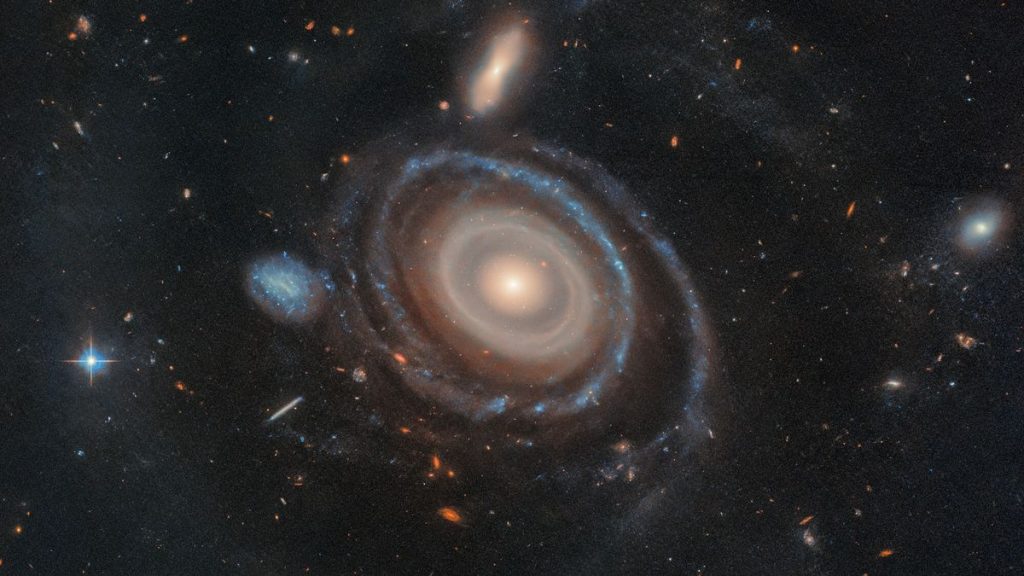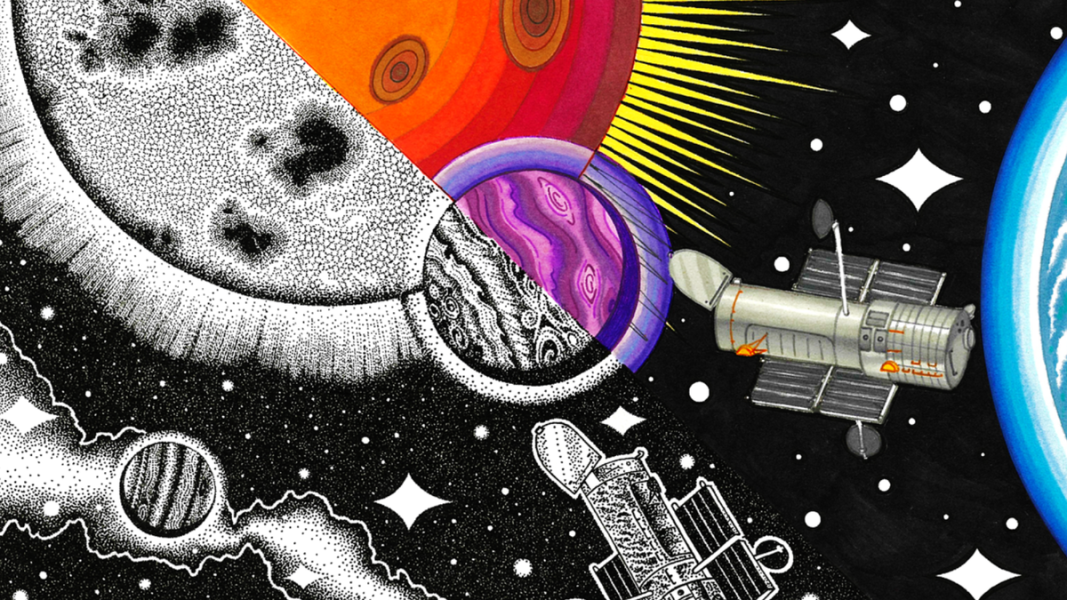‘Bull’s-eye!’ Hubble telescope spots record-shattering 9-ring galaxy — and the cosmic ‘dart’ that smashed through its center – Livescience.com

No offers foundScientists using the Hubble Space Telescope have spotted a record-smashing galaxy wrapped in 9 rings of stars — along with the dwarf galaxy that violently plunged through its center.
When you purchase through links on our site, we may earn an affiliate commission. Here’s how it works.
Astronomers have spotted a “bull’s-eye” galaxy with a whopping nine rings, smashing the previous record by six rings. The discovery of the galaxy, known as LEDA 1313424, is helping researchers understand what happens when galaxies collide.Astronomers using the Hubble Space Telescope spotted LEDA 1313424 “serendipitously” while reviewing a sky survey completed in 2019. The researchers initially counted eight visible rings and later confirmed a faint ninth ring using data from the W. M. Keck Observatory in Hawaii. They published their results Feb. 4 in The Astrophysical Journal Letters.The scientists believe the rings formed when a dwarf galaxy collided with LEDA 1313424’s center roughly 50 million years ago. The impact sent shock waves rolling through the larger galaxy like ripples in a pond. These waves, in turn, pushed clouds of cosmic gas and dust together into rings, thus creating new star-forming regions. Those areas now shine as bright concentric circles around the galaxy’s “bull’s-eye.”The blue dwarf galaxy that ran through LEDA 1313424 is still connected to the collision site by a thin tether of gas, and is visible just to the left of the larger galaxy in the new image. The blue dwarf now sits about 130,000 light-years away from its larger companion — a distance greater than the width of the Milky Way.Related: The 12 strangest objects in the universeHubble’s timing was impeccable. “We’re catching the Bullseye at a very special moment in time,” Pieter van Dokkum, an astronomer at Yale University and co-author of the study, said in a statement. “There’s a very narrow window when a galaxy like this would have so many rings.”In addition to setting records, LEDA 1313424’s rings help to confirm past predictions about how such galactic structures form. “That theory was developed for the day that someone saw so many rings,” van Dokkum said.Get the world’s most fascinating discoveries delivered straight to your inbox.—Supermassive black holes in ‘little red dot’ galaxies are 1,000 times larger than they should be, and astronomers don’t know why—Scientists discover giant galaxy 32 times bigger than Earth’s — and they named it ‘trouble’—A cosmic ‘CT scan’ shows the universe is far more complex than expectedRather than being evenly spaced like a target, the rings are clustered tightly at the galaxy’s center and are more widely spaced farther out. This suggests the first few rings formed rapidly and spread widely, carried by momentum from the initial collision. The remaining rings came together more slowly and traveled less as the disturbance began settling down.LEDA 1313424’s rings will likely dissipate over time, but its current stunning configuration will help scientists model how galaxies form rings in the first place. Astronomers can look forward to finding more multiringed galaxies in the future. Hubble’s successor, NASA’s Nancy Grace Roman Space Telescope, is scheduled to launch in May 2027. With a field of view 100 times larger than Hubble’s, it promises to capture light from millions — or perhaps billions — of galaxies in its lifetime.Joanna Thompson is a science journalist and runner based in New York. She holds a B.S. in Zoology and a B.A. in Creative Writing from North Carolina State University, as well as a Master’s in Science Journalism from NYU’s Science, Health and Environmental Reporting Program. Find more of her work in Scientific American, The Daily Beast, Atlas Obscura or Audubon Magazine.Please logout and then login again, you will then be prompted to enter your display name.How to see Jupiter ‘kiss’ the moon tonight — before Mars breaks them up this weekendSnow Moon 2025: How to see February’s full moon rise with the ‘Heart of the Lion’ before Valentine’s DayScientists are building an ultimate atlas of the vagina. Here’s why.
Livescience is part of Future US Inc, an international media group and leading digital publisher. Visit our corporate site.
©
Future US, Inc. Full 7th Floor, 130 West 42nd Street,
New York,
NY 10036.






